skeuomorphism
description: a design principle in which interface objects mimic their real-world counterparts, such as a digital calendar resembling a paper one.
22 results
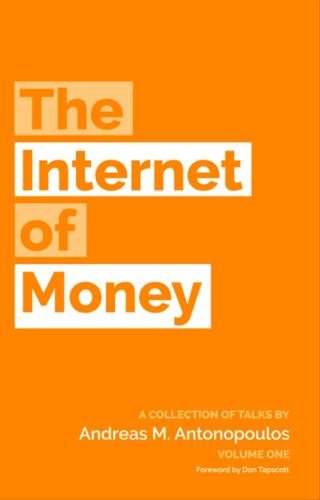
The Internet of Money
by
Andreas M. Antonopoulos
Published 28 Aug 2016
"The essence of good design is picking the metaphor that informs expectations." 8.3.3. Skeuomorphic Design Here’s the next big problem with metaphors and design. There’s a certain concept called skeuomorphic design. The word skeuomorphic means “a shadow of its former self.” It’s form as a shadow. What it means is when you create elements in design that give you references or hints of some previous form. For example, a classic example, in the first iteration of iPads, the iOS software had a lot of skeuomorphic design. If you opened your contact database, it was bound in leather. That leather had stitching.
…
When you’re playing a card game on your computer and it has fake felt under the cards, that’s because it’s trying to draw out the metaphor of a casino by introducing this design element. Skeuomorphic design is extremely powerful. It’s also extremely dangerous. If you don’t use it correctly, again, it creates different expectations as to what is going to happen next. In bitcoin, we have a lot of skeuomorphic design. My favorite and most hated form of skeuomorphic design is the picture you will see in every single article written about bitcoin: a pile of gold coins with a letter B on them, usually the Casascius coin designed by Mike Caldwell, but possibly some other rendering of that.
…
, Bitcoin, the Zombie of Currencies, The Dangers of Automobiles, Electricity, and Bitcoin, Primates and Moneycriticism, The Dangers of Automobiles, Electricity, and Bitcoincriticisms, Infrastructure for Horses, Infrastructure for Natural Gascrowdfunding, Building Blocks of Bitcoincultural hallucination, Characteristics of Moneycurrency, Valuing Currencies by Usechoice, Born into Currency community, Choosing Currencies and Communities creation, Currency as a Means of Expression evolution, Currencies Evolve expression, Currency as a Means of Expression index, Index Currency paradigm, Born into Currency sovereignty, Currency Creates Sovereignty value, Valuing Currencies by Use zero-sum game, Born into Currency Currencyas an application, Currency as an App meta-politics, Choosing Currencies and Communities D data, From Voice to Data decentralization, Communications Expanding While Access to Banking Is Declining, New Architecture, New Access, Network-Centric Money decentralized, Open Innovation and Opt-In Systems design, Negative Outcomes by Design, Not Intent, Smart vs. Dumb Networks disruptive tech, Designing for Innovation metaphors, Bitcoin and Design purpose, ATM Experience skeuomorphic, Skeuomorphic Design user experience, Bitcoin ATM Experience disruptarian, Banking: Liberator to Limiterdisruptive tech, Designing for Innovationdumb, Smart vs. Dumb Networks E economic activities, Primates and Money economic inclusion, Communications Expanding While Access to Banking Is Declining economics, Tragedy of the Commons electricity, Infrastructure for Natural Gas, From Natural Gas to Electricity elements, Bitcoin’s Atomic Structure email, Multiple Currencies Coexist, Alt Groups Will Destroy the Internet email attachments, Email and Email Attachments Will Destroy the Internet Ether, Choosing Currencies and Communities ethereum, Currency as a Language evolution, Currencies Evolve expression, Currency as a Means of Expression F fees, Bitcoin, the Invention, There Are No Spam Transactions in Bitcoin, Open Innovation and Opt-In Systems, Fee Optimization and Scaling, Spam Transactions, Legitimate Transactions, Illegitimate Transactions festival, Festival of the Commons festival of the commons, Dumb Networks, Innovation, and the Festival of the Commons financial exclusion, Dreaming of Totalitarian Control over All Financial Transactions financial inclusion, Predicting the Future for consumers, Open Innovation and Opt-In Systems freedom, Communications Expanding While Access to Banking Is Declining, Censorship of Financial Transactions, Bitcoin, the Zombie of Currencies, Banking Privilege and Surveillance G game theory, Open Innovation and Opt-In Systems geopolitics, Communications Expanding While Access to Banking Is Declining global, Money of the People, Solving Payment Problems global culture, Communications Expanding While Access to Banking Is Declining grand arc, Grand Arc of Technology H HD wallets, Festival of the Commons 2012-2014 hierarchy, Banking: Liberator to Limiter honeypot, Attacks Build Resistance I identity, Dreaming of Totalitarian Control over All Financial Transactions, Banking Privilege and Surveillance incentives, Open Innovation and Opt-In Systems inclusion, Money of the People, Banks for Everyone, Including 6.5 Billion People in a Global Economy, Banking Privilege and Surveillance incremental tech, Designing for Innovation index, Index Currency infrastructure inversion, Infrastructure Inversion, From Horses to Vehicles banking, From Banking to Bitcoin data, From Voice to Data electricity, From Natural Gas to Electricity paved roads, From Horses to Vehicles innovation, Recognizing Innovation, Open Innovation and Opt-In Systemsadoption, Infrastructure for Natural Gas asking permission, New Architecture, New Access automobiles, The Dangers of Automobiles, Electricity, and Bitcoin, New Technologies, Riding on Old Infrastructure banking, New Architecture, New Access, Open Innovation and Opt-In Systems, Festival of the Commons, Banking Privilege and Surveillance byob (be your own bank), Including 6.5 Billion People in a Global Economy cameras, Incumbent Reactions to Innovation competition, Infrastructure for Human Voices creativity, Building Blocks of Lego credit cards, Paper to Plastic crime, The Dangers of Automobiles, Electricity, and Bitcoin criticism, The Dangers of Automobiles, Electricity, and Bitcoin criticisms, Infrastructure for Horses, Infrastructure for Natural Gas disruptive tech, Designing for Innovation economic activities, Primates and Money electricity, Infrastructure for Natural Gas for consumers, Open Innovation and Opt-In Systems HD wallets, Festival of the Commons 2012-2014 incremental tech, Designing for Innovation infrastructure inversion, From Horses to Vehicles internet, UX and Society interstitial, Interstitial Innovation investment, Festival of the Commons 2012-2014 Linux, Incumbent Reactions to Innovation makers, Recognizing Innovation mash-up, Interstitial Innovation media, Infrastructure for Natural Gas modem, Infrastructure for Human Voices MP3, Incumbent Reactions to Innovation multisignature, Festival of the Commons 2012-2014 new medium, Separating the Medium and the Message open, Incumbent Reactions to Innovation paper money, Precious Metals to Paper permission, The Smart Network - Phones permissionless, Neutrality, Criminals, and Bitcoin, New Architecture, New Access, Bitcoin’s Dumb Network regulation, Predicting the Future tools for, Building Blocks of Creativity wallet, Fee Optimization and Scaling international finance, Money of the Peopleinternet, Bitcoin, the Invention, Neutrality, Criminals, and Bitcoin, New Architecture, New Access, The Dumb Network - Internet, UX and Society, Usenet Will Destroy the Internetprinting press, Authority by Production interstitial, Interstitial Innovationinvestment, Festival of the Commons 2012-2014 K keys, Master-Slave Architecture, Wallets aren’t wallets permission, Wallets aren’t wallets L language, How Old Is Money?

Jony Ive: The Genius Behind Apple's Greatest Products
by
Leander Kahney
Published 14 Nov 2013
The original Macintosh desktop computer, for example, was conceived as a skeuomorphic version of an office desktop as seen from above. Because everybody knew how the items on a traditional desk were used in the physical world, that knowledge could be implicitly transferred to its digital counterpart. More recently, however, Apple had heard loud criticisms concerning its use of “tacky” skeuomorphic elements. According to some, visual references to obsolescent office furniture and audio equipment were beginning to look dated and out of place. Forstall, after Jobs’s death, was reportedly Apple’s major champion of skeuomorphic design, which put him in the line of fire not only in the eyes of external critics but from some within Apple too.
…
A key contention concerned Forstall’s fondness for skeuomorphic design; that is, graphic interfaces that resemble real-world objects. Apple’s user-interface conventions under Forstall tended to look like their real-life counterparts. Virtual wooden shelves were used to display eBooks in the iBookstore app; Apple’s Podcast app looked like a reel-to-reel tape recorder; iOS’s multiplayer gaming service, Game Center, was styled like a Vegas casino table. Faux leather and wood-grain patterns had found their way into many of Apple’s most popular apps. Such skeuomorphic design allows neophyte users to be immediately familiar with an unfamiliar device, operating on the assumption that nothing is simpler than an interface that works exactly like objects do in the real world.
…
On the other side of the calculation, Jony’s overhaul of iOS was consistent with his approach to hardware. Jony’s hardware has always been about bare, utilitarian minimalism. He disdains decoration—as he says, every tiny screw is there for a reason—and his goal is to make design disappear. In contrast, skeuomorphism is about making software look like something it isn’t, like a roulette table or a yellow legal pad, and decoration is essential. Skeuomorphic software is the opposite of Jony’s minimalist hardware. One strips away everything that isn’t necessary; the other puts it back in. This paradox within Apple ended with iOS 7. With the ornamentation taken out, Jony’s software was in sync with his hardware, stripped to their essentials.
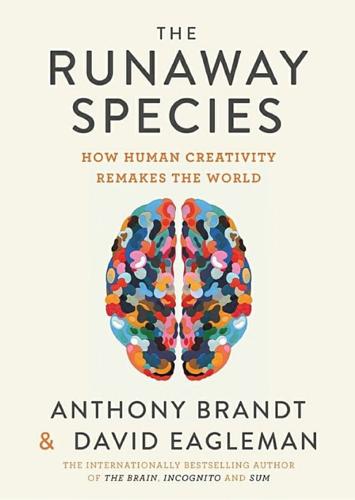
The Runaway Species: How Human Creativity Remakes the World
by
David Eagleman
and
Anthony Brandt
Published 30 Sep 2017
In an interview with the New Yorker, designer Jonathan Ive said that he placed the knob slightly off-center to make it “strangely familiar.” If he had centered it, users would have expected it to perform its original function; had he removed it, the watch wouldn’t have looked enough like a watch.5 Skeuomorphs temper the new with the familiar. Our smartphones are packed with skeuomorphs. To place a call, we touch an icon of an old phone handset with an extruded earpiece and mouthpiece – a profile that departed the technology landscape long ago. The camera on your smartphone plays an audio file of a shutter sound, even though digital cameras don’t have mechanical shutters.
…
Our creations may look largely like what’s come before, but they morph. Too much predictability and we tune out; too much surprise and we become disoriented. As we’ll see in the coming chapters, creativity lives in that tension. The exploration/exploitation tradeoff also explains why our world is so densely populated with skeuomorphs: features that imitate the design of what has come before. Consider that when the iPad was introduced it featured a “wooden” bookshelf with “books” on it – and the programmers went to great lengths to make the “pages” turn when you swiped your finger. Why not simply redefine a book for the digital era?
…
George Seurat’s Un dimanche après-midi à l’île de la Grande Jatte In digital pixilation, the dots are so small you normally don’t see them. This covert fracturing is the innovation that gives rise to our whole digital universe. The idea of pixilation – breaking a whole into tiny parts – has a long history. When we “cc” an email, we are employing a skeuomorph from the analog age: carbon copy. In the nineteenth and early twentieth centuries, an author would clone a document by first placing a sheet of black or blue carbonic paper between two sheets of plain paper; then, by writing or typing on the top sheet, dry ink or pigment would be transferred to the lower one, creating a duplicate.
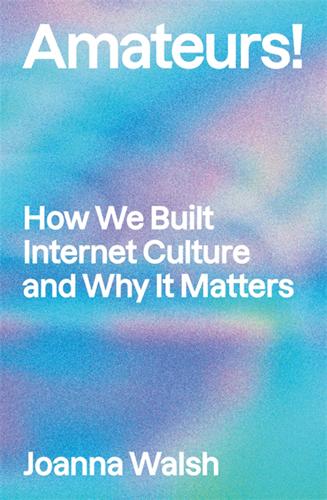
Amateurs!: How We Built Internet Culture and Why It Matters
by
Joanna Walsh
Published 22 Sep 2025
They were media and they used new tech, but they operated like old media models. Even if you clicked instead of leafing through a newspaper or a book, the experience was similar. You couldn’t interact with a CD-ROM in any way that would get a live response from either a human or a machine. This uncomfortable alliance is a version of what’s called skeuomorphic, like a digital radio housed in a retro case that has the appearance of old tech. But this time it’s the other way round: it looks new but the system it houses is old. Nothing sounds older than a new aesthetic. It must have been with a sense of irony that artist/technologist/publisher James Bridle coined the phrase ‘the New Aesthetic’ in 2011.
…
The London-centric fruit of ‘working creatives of Bridle’s generation’, it was an avant-garde old-fashioned enough to have a physical and generational as well as cultural location. For an avant-garde to diverge from tradition requires its acknowledgement of the past, and nostalgia for this avant-garde move produces a skeuomorphic feedback loop. If the conventional cycle completes, Sterling predicted, then ‘in 2012, premonitory blogposts; in 2022, solo shows and coffee-table books’. But that didn’t happen. To Bridle’s credit, the New Aesthetic has remained digitally native. Not made as part of his life as a ‘working creative’, the New Aesthetic remains unprofessional in the best sense.
…
Working via the online exchange of sampled digital music, which was never played offline, was, in the early 2010s, something new. An unmonetised, if not strictly amateur, practice, it refers back to no live set. Still, it references more traditional methods of experiencing music. Vaporwave gained ground when YouTube began to allow users to host live streams, including the conceptual skeuomorph of DIY one-host ‘radio stations’. Vaporwave is often dissed because its bricolage techniques don’t look like work, but, ironically for a genre that foregrounds its technological origins, vaporwave is handmade. It is not the muzak that it parodies and worships: it is created by individual artists.

The Metaverse: And How It Will Revolutionize Everything
by
Matthew Ball
Published 18 Jul 2022
Think back to your first iPhone (or perhaps, your first six). From 2007 to 2013, Apple’s operating system was highly skeuomorphic—its iBooks application showed digital versions of books on a digital bookshelf, its notes app was designed to look like a physical yellow pad of paper, its calendar had simulated stitching, and its games center was intended to resemble a felt table. With iOS 7, Apple ditched these legacy design principles for those native to the mobile era. It was during Apple’s skeuomorphic era that many of today’s leading consumer digital companies were founded. Companies such as Instagram, Snap, and Slack reimagined what digital communications would be—not using IP to call a landline (Skype) nor text (BlackBerry Messenger), but to reinvent how we communicate, why, and what about.
…
The amount of data that must be read, written, synchronized (more on this below), and rendered to create and sustain this experience is not just unprecedented—it is far beyond anything possible today. However, the literal version of Stephenson’s Metaverse may not even be desirable. He imagined individuals waking up in the Metaverse inside their virtual homes, then walking or taking a train to a virtual bar. While skeuomorphism† often has utility, “The Street” as a single unifying layer for everything in the virtual world likely does not. Most participants in the Metaverse would rather teleport from destination to destination. Fortunately, it is far easier to manage the persistence of a user’s data (i.e., what they own and have done) across various worlds and over time, rather than the persistence of every user’s most minute contributions to a planet-sized world.
…
Some believe that the only way to provide the computing resources needed for the Metaverse is through a decentralized network of individually owned—and compensated—servers and devices. But I’m getting ahead of myself. * After Epic Games sued Apple in August 2020, Apple removed Fortnite from its App Store, thereby making it impossible for users to play the game on iOS devices. † “Skeuomorphism” refers to a technique used in graphical design in which interfaces are designed to mimic their real-world counterparts. For example, the iPhone’s first “Notes” app involved typing on yellow paper with red lines, just like the common notepad. ‡ This is often referred to as a “persistent” connection, but in the interest of differentiating it from the persistence of a virtual world, I’ll use the term “continuous” here

User Friendly: How the Hidden Rules of Design Are Changing the Way We Live, Work & Play
by
Cliff Kuang
and
Robert Fabricant
Published 7 Nov 2019
Thus, while Facebook worked as a metaphor for Kenyan ideas about knowledge and society, the metaphor failed to explain what the internet could be and how it worked. There is another breakdown in metaphor that we can watch from our own phones, one created by Apple. Throughout the mid-2000s, the company was lambasted in the design community for its skeuomorphs, which the Oxford English Dictionary defines as “an element of a graphic user interface which mimics a physical object.” These had started out usefully, but over the decades reached a pointless level of detail. At one time, it was important for a file “folder” to indeed look like a folder, so that you knew it did the same thing.
…
By the mid-2000s the details had gotten baroque. To know how the calendar worked, you didn’t need the calendar on every Mac to look as if it had been bound by stitched leather; to know that you could buy books via the iBooks app, there didn’t need to be digital shelves, made of digitally rendered wood. The design community’s bias against skeuomorphism had descended from the Bauhaus, which, at the dawn of modern design, declared a break with tradition by decrying decorative flourishes meant to link the new world with the old—for example, the Art Nouveau metalwork of the Paris Métro entrance, where copper was fashioned to look like ornate vines.
…
De los Reyes happened to return to work at a decisive moment for Microsoft. Satya Nadella was about to be appointed CEO, which lit a fuse that snaked through the company’s machinery. Among the first changes to happen was that Albert Shum, who’d become famous inside Microsoft for leading the ambitious, brazenly “flat” and pointedly non-skeuomorphic design of Windows Mobile, was appointed to head up design for nearly all of Microsoft. Shum must have scratched his head, pondering what “design at Microsoft” even meant. After all, this was a company with 130,000 employees, countless product groups, and enough internal feuding to exhaust the Hatfields and Mc-Coys.
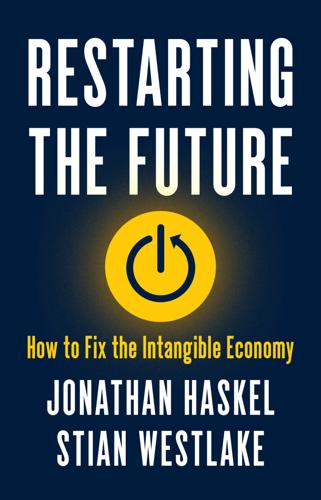
Restarting the Future: How to Fix the Intangible Economy
by
Jonathan Haskel
and
Stian Westlake
Published 4 Apr 2022
Some expertspoint out that you can type faster on different keyboard layouts.38 So, if we ditched QWERTY, we would be able to type faster and a common activity would become marginally faster and easier. But even though typewriters are now just curios and the jamming of the keys a distant memory, QWERTY persists because users learn to type using it and because consumers expect it. Technologists call things like the QWERTY layout skeuomorphs: design features that persist even though they reflect a technical constraint or feature that is now redundant, like the rivets on jeans or the floppy disk “Save” icon on a computer. If something as trivial and as obviously arbitrary as the layout of a keyboard can become stuck, how much more must this be true of deeply embedded, culturally cherished norms and rules?
…
But it is more costly than good institutions; we should not forget that British economic growth in the glory days of the Industrial Revolution (the nineteenth century) was around 0.3 percent per year—low compared with the United States and Germany, which were in a position to learn from Britain’s gambles and put better institutions in place from the start. In short, when we survey the institutional landscape at a time of economic change, we should not be surprised to encounter hangovers, skeuomorphs, and relics. Unpredictability When information is absent or missing, exchange will have unpredictable consequences. Richard Nelson made the point that institutions are the product of evolution, not design. Individual policies or rules may be designed, but as soon as you combine rules, laws, and norms into a functioning institution, they take on emergent properties that are hard to predict.
…
See work from home (WFH) rent seeking, 117, 138, 141, 216, 244, 254–55 replication crisis, 129–30 reputation, 92–93 research and development (R&D), 48, 53, 55–58, 124–26, 160, 178, 193, 203 retooling hypothesis, 40, 45 reversion to the mean, 156 Ridley, Matt, 123, 136 Roads and Bridges (Eghbal), 139 Robert-Nicoud, Frédéric, 204 Roberts, John, 142, 245 Robinson, James, 85, 96, 266n1 Rock, Daniel, 243 Rogers, Mark, 133 Romer, Paul, 247 Rossi-Hansberg, Esteban, 217 Ruiz-Valenzuela, Jenifer, 232 “Ryan’s World” (YouTube program), 35–36 Sawhill, Isabel, 208 scalability, 52–53, 115 Schoenholtz, Jim, 151 Schulz, Nick, 10, 86 Schumacher, Ernst, 58 Schwartz, Peter, 25 Scott, James C., 58 Second Machine Age, The (Brynjolfsson and McAfee), 39 segmentation, market, 223 Selden, George, 2 Sena, Vania, 133 Sever, Can, 155, 178 Shadbolt, Nigel, 146 shareholder value management, 158–62 Sheer, Lia, 160–61 Shiller, Robert, 36–37 Shleifer, Andrei, 156 Shockley, William, 204 short-termism, 159, 161–62 Sichel, Dan, 42, 45 signalling, human capital, 233–34 Simon, Hermann, 57 Skelton, David, 202 skeuomorphs, 106–7 Smith, James, 179 Smith, Noah, 236 Southwood, Ben, 138 special interests, capture by, 130 specificity, 104–6 spillovers, 52–53, 113, 121–36, 134f, 158–62, 269n48 Srivastava, Anup, 157 stagnation, 4, 23–26, 24f, 26f, 67–70, 68f state capacity, 16, 143–46, 240, 244, 245f, 247, 249–53 State We’re In, The (Hutton), 41 status, inequality of, 28 Stoker, Gerry, 29 street votes, 197–98 suitcase, wheelie, 123–24 Summers, Lawrence, 33, 163 sunkenness, 114, 115t, 116, 181 synergies, 53–54, 68–69, 114, 158–62, 269n48 Syverson, Chad, 243 Tabarrok, Alex, 133 Tabarrok curve, 133–34, 134f Taylor, Mark Zachary, 144, 256 Taylor, Tim, 268n24 tech-governance fit, 105 technical debt, 12 technocrats, 193–96 technological approach, 87 technological change, 99–104 technology, 39, 42–43, 68–69, 128–30 technopopulism, 257 Theranos, 80 Thicke, Robert, 131–32 Thiel, Peter, 35, 137, 141, 258 Timmis, Jonathan, 217 Tobin’s Q, 25–26, 26f, 264n13 total factor productivity (TFP), 43, 45, 67–68, 68f, 69–70, 264n31, 265n3 transactions costs, 95, 266n8 transport infrastructure, 188–89, 199–200 Tranter, Justin, 132, 270n19 Trump, Donald, 7, 202, 258 trust, 92–93, 99 uncertainty, 88, 265n49 unemployment/inflation trade-off, 166 unpredictability, 108–10 vaccines, 22, 43 value-based management, 158–62 value investing, 155–58 van Bavel, Bas, 111, 242 van Zandt, David, 101, 268n24, 268n31 VC.

The Stack: On Software and Sovereignty
by
Benjamin H. Bratton
Published 19 Feb 2016
(More on this in the concluding chapter.) In the meantime, instead of new forms and behaviors, as platform information becomes more physical, its initial accomplishments may to “roboticize” machines, processes, techniques, behaviors, and systems as we already find them. The results are not unlike skeuomorphic interface designs where digital icons are made to resemble everyday objects and so allegorize how human Users (and designers) understand their machine's functions to work. It will take some time for platform robotics to invent new infrastructural systems that are unique to how its capacities can be designed instead of merely automating what already exists.
…
A fantastic transubstantiation takes place for which visual signs and images no longer simply represent other things in the world, but become themselves tactile technologies that, when activated, cause a real event to occur correspondent with the semantic content of that sign/image. A picture of a bomb is merely a representation, whereas a button with a picture of a bomb on it that causes remote explosions is weaponized skeuomorphism. Put in more technical terms, the GUI is a visualization of a machinic network and of the outcomes that it claims to mediate; the formation of its interfaciality is an arc of translation from a set of possibilities into a visual instrument. Between the machine and what it can do and the representations of that potential are translations, and however arbitrary or integral each may be, they are necessary for our comprehension of any network we might encounter.
…
In this recursion, the semiotic and instrumental loop is closed, and so these images of assemblage that are also machines to make those assemblages are a third-order interface design. Within the broader history of images, these diagrammatic tools are innovative in that they not only provide a convincing and concise minimal diagram of far-flung processes; they actually do what they represent (see the above reference to “weaponized skeuomorphism”). Conversely within the history of interfaces, which would include fences, levers, latches, knobs, switches, handles, buttons, and plugs, these interfaces rely on visual representations of the effects on the menu. For this reason, the ideological reductiveness of the interfacial image is more than a conceptual problem; it is also how systems enforce themselves, one against another.
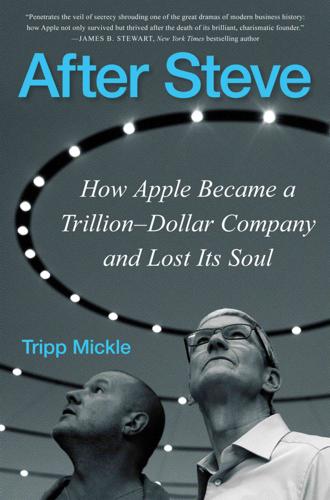
After Steve: How Apple Became a Trillion-Dollar Company and Lost Its Soul
by
Tripp Mickle
Published 2 May 2022
Hansen, “How Apple Is Organized for Innovation,” Harvard Business Review, November–December 2020, https://hbr.org/2020/11/how-apple-is-organized-for-innovation; Tony Fadell, “For the record, I fully believe . . .,” Twitter, October 23, 2000, https://twitter.com/tfadell/status/1319556633312268288. Steve Jobs had championed: Klaus Göttling, “Skeumorphism Is Dead, Long Live Skeumorphism,” Interaction Design Foundation, https://www.interaction-design.org/literature/article/skeuomorphism-is-dead-long-live-skeuomorphism. Apple’s heads of operations: St. Regis Lobby description provided by the hotel via email at author’s request. Ive wanted to bring: Erica Blust, “Apple Creative Director Alan Dye ’97 to Speak Oct. 20,” Syracuse University, https://news.syr.edu/blog/2010/10/18/alan-dye/; “Alan Dye,” Design Matters with Debbie Millman (podcast), June 1, 2007, https://www.designmattersmedia.com/podcast/2007/Alan-Dye; “Bad Boys of Design III,” Design Matters with Debbie Millman (podcast), May 5, 2006, https://www.designmattersmedia.com/podcast/2006/Bad-Boys-of-Design-III; Debbie millman, “Adobe & AIGA SF Presents Design Matters Live w Alan Dye,” YouTube, https://www.youtube.com/watch?
…
IN ADVANCE OF THE CHANGE, Ive arranged to grant an exclusive interview for an article in the Telegraph by his close friend Stephen Fry. The British actor and writer, a self-professed Apple fanboy, penned a glowing profile that described his friend Ive as a “wonder boy” whom Cook had empowered to free Apple’s software from its skeuomorphic past in favor of a “brighter, clearer set of exquisitely designed images.” “Cook quite clearly adores Jony,” Fry wrote, “not just as the goose who continues to lay his golden eggs (solid gold in the case of the Apple Designer Watch), but as a colleague and a person. Everyone does. It is impossible not to get delightedly caught up in the earnest halting way he expresses his highly focused passion.”

What Technology Wants
by
Kevin Kelly
Published 14 Jul 2010
Nature, 410 (6827). http://dx.doi.org/10.1038/35068645. 120 “encoded implicitly in the genome”: Lynn Helena Caporale. (2003) “Natural Selection and the Emergence of a Mutation Phenotype: An Update of the Evolutionary Synthesis Considering Mechanisms That Affect Genomic Variation.” Annual Review of Microbiology, 57 (1). 121 from the same starting point: (2009) “Skeuomorph.” Wikipedia, Wikimedia Foundation. http://en.wikipedia.org/w/index.php?title=Skeuomorph&oldid=340233294. 122 “the embodiment of contingency”: Stephen Jay Gould. (1989) Wonderful Life: The Burgess Shale and Nature of History. New York: W. W. Norton, p. 320. 123 The Triad of Evolution: Inspired by Stephen Jay Gould. (2002) The Structure of Evolutionary Theory.
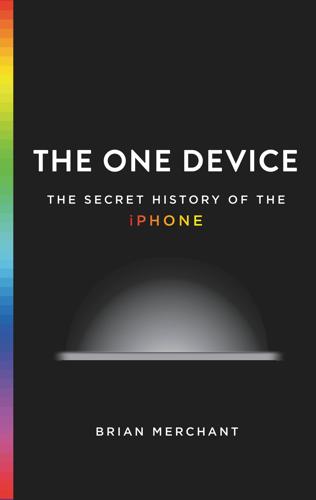
The One Device: The Secret History of the iPhone
by
Brian Merchant
Published 19 Jun 2017
“You felt like you were touching a piece of paper, and it was scrolling under your fingers.” That natural physicality extended to the design of the apps. “There was a lot of work that went into mimicking physical and familiar things that people were already used to interacting with,” he says. And that’s where the iPhone’s infamous skeuomorphism—the designing of digital objects to resemble versions of real ones—came in. “Early on, skeuomorphism was one of the things that made it so that people actually understood how to use an iPhone when they picked it up—there were already physical things in their life that they could model their interactions after, and that gave them clues as to how to use the device,” Ganatra says.

The Best Interface Is No Interface: The Simple Path to Brilliant Technology (Voices That Matter)
by
Golden Krishna
Published 10 Feb 2015
The whole point of the efficiency is so that we can enjoy more of what we love. No, this isn’t a complete list of exceptions, simply an acknowledgment that, like any rule, there are exceptions. The real power of “the best interface is no interface” is as a call to action. As a philosophy. It’s not about flat design or skeuomorphic. Web or mobile. This is about aiming for the best outcome of NoUI. One that doesn’t distract us or try to get us addicted, something that embraces the way we live and aims to make it better quietly and elegantly. For technology to become embedded in the fabric of our lives instead of a distraction away from what really matters.
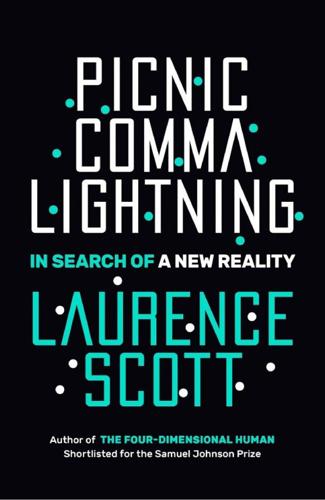
Picnic Comma Lightning: In Search of a New Reality
by
Laurence Scott
Published 11 Jul 2018
Vast international audiences were horrified to see the details of the brutality: how the man’s shirt rose to expose a pale strip of his stomach (another punctum) as he was pulled along the floor, his shrieking refusal, the blood on his face. What would once have gone unseen by all but a hundred people is made globally visible. Old walls are indeed coming down; each click of our pocket cameras, skeuomorphically added to smartphone shutters, is the sound of a key turning in a door. The Forked Image Cut to Dundas, Ontario, 1990, a year since the garden party. Our new home on a suburban estate has mutton-coloured siding. I passed much of that first Canadian summer deciding whether to be Master Splinter or April O’Neil in my imaginary games of Teenage Mutant Ninja Turtles.

Superbloom: How Technologies of Connection Tear Us Apart
by
Nicholas Carr
Published 28 Jan 2025
The sense of continuity was reinforced by the use in email applications of features drawn from paper correspondence, such as cc and bcc fields, signatures, and inboxes. “There was a feeling,” Vittal explained, “that for user understandability we had to mimic traditional forms of communication—office memos, letters, postcards. Drawing parallels helped people understand what they could do.”5 Even the icons associated with email programs tended to employ skeuomorphic symbols borrowed from the world of letters: stamps, envelopes, pens, mail trucks. As email use exploded, perceptions and habits changed. People felt mounting pressure to shift to a stripped-down style of writing. With new messages pinging into mailboxes every few minutes, each clamoring for attention, no one had time to write or read long, elegant missives.
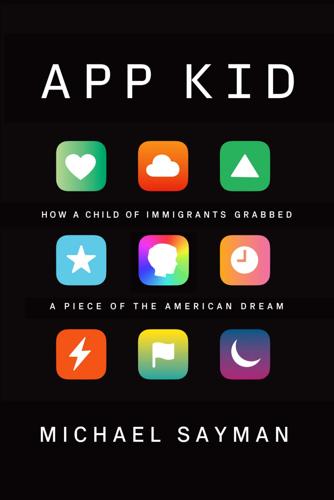
App Kid: How a Child of Immigrants Grabbed a Piece of the American Dream
by
Michael Sayman
Published 20 Sep 2021
The brand is the personality and message that a company wants to convey to its target audience. It’s a lot like your personal style: the clothes and jewelry and hairstyle you choose to wear when you go out into the world. Design is more about the usability and functionality of a product. Along with most every other tech designer in the early 2000s, I loved a design style known as skeuomorphism. This is where digital interfaces mimic their real-world counterparts, down to their textures, drop shadows, and reflective effects. Early Apple products relied heavily on this style; their on/off switches looked like real-world knobs, their calculator buttons seemed to have beveled edges, and so on.
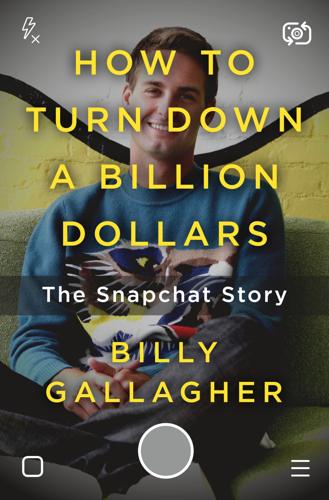
How to Turn Down a Billion Dollars: The Snapchat Story
by
Billy Gallagher
Published 13 Feb 2018
The team created nine different sign-up processes but weren’t able to test which one worked best with users because they hadn’t launched. Head designer Rob Ryan designed a beautiful app that looked and acted just like a real-world wallet, mimicking the motions of pulling dollars out and handing them to a friend. But Clinkle sat and waited and never launched the app. Eventually, the design world shifted away from skeuomorphism—the design concept of creating digital products that look and feel like the real-world products they are mimicking—and Clinkle’s app looked odd and antiquated before it even launched. Clinkle employees were constantly told by Lucas and his brain trust that they were just a couple months away from launching to consumers.

A New History of the Future in 100 Objects: A Fiction
by
Adrian Hon
Published 5 Oct 2020
Most fashion designers weren’t experienced with the kind of 3-D modeling tools that Nagra’s designers used. Their experience was in nondigital, fully physical environments. That’s where Evans came in: Nagra hired her as a consultant to help create the tools that designers would use. Throwing out Nagra’s existing austerely technical interface, Evans opted for a highly skeuomorphic system that used physical gestures and commands that mimicked those she’d used her entire life. Designers would put their fingers into the shape of scissors to cut and could virtually sew their clothes at high magnification, all using thimble rings for absolute AR positioning. Their collaboration saw them become close friends.

This Is for Everyone: The Captivating Memoir From the Inventor of the World Wide Web
by
Tim Berners-Lee
Published 8 Sep 2025
Instead, people used GIFs, which had limited support for simple, frame-by-frame animation. Early web page authors could be quite creative. When they worried that you would not notice their links, they would add little embedded images of physical buttons sticking out of the page in relief. This ‘skeuomorphic’ approach helped web readers get over the difference between normal text and hypertext. The button would say ‘Click here for more info’ rather than just ‘More info’. Today, we tend to use a much more minimalist approach with just ‘. . .’ in a slightly lighter shade of grey to indicate ‘Click here for more info’.
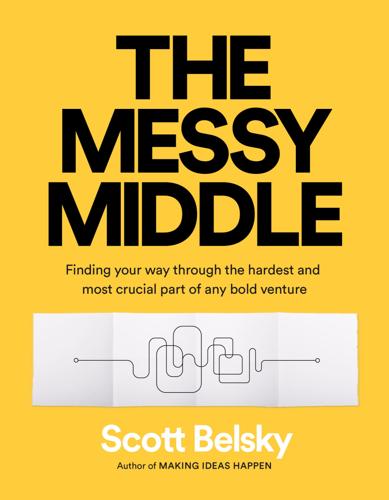
The Messy Middle: Finding Your Way Through the Hardest and Most Crucial Part of Any Bold Venture
by
Scott Belsky
Published 1 Oct 2018
They were already trying to disrupt a common, familiar action—cooking—so they didn’t need to complicate it even further by persuading customers to place mini spaceships in their kitchens. It’s easier to disrupt the norm by being familiar. Patterns in the physical world are powerful, and the best products tap into them. The early designs of Apple’s mobile operating system were notoriously “skeuomorphic,” which means they employed a design where an interface resembled its real-world counterpart. While many professional designers scoffed at Apple’s efforts to make its digital notepad look like its physical counterpart, stitched leather and all. But by doing so, Apple was able to reduce the cognitive friction experienced by its newest users.

Valley of Genius: The Uncensored History of Silicon Valley (As Told by the Hackers, Founders, and Freaks Who Made It Boom)
by
Adam Fisher
Published 9 Jul 2018
Tony Fadell: Each thing was a mock-up of the real world, and you would interact with those things like you would interact with the real world. Steve Jarrett: You started at a picture of a desk and you could drag things around on the desk and you tap on things to open them. Tony Fadell: It was skeuomorphic—like file cabinets to put your things in, a desk to write on… Steve Jarrett: And then you could leave the desk and go into the hallway. And in the hallway there’d be doors. Michael Stern: You’d click and behind the doors were various rooms—like the game room, the media room, the library. In the library there would be all your books, all of your electronic books.

Facebook: The Inside Story
by
Steven Levy
Published 25 Feb 2020
Though a redesign seems trivial, it was actually a massive deal. Times had changed; Instagram had become a global business. And the app was not just a way to share in a fun and vintage way but an important part of the way people expressed themselves. So it deserved a logo that discarded the realistic view, known in software as a skeuomorphic image, and went to something more abstract, a glyph of rectangles and circles that suggested a camera. Replacing the rainbow were warm color gradients that gave the logo a shimmery look. Because the change was so dramatic, Systrom was a little concerned when he showed it to Zuckerberg over one of their dinners.

Gnomon
by
Nick Harkaway
Published 18 Oct 2017
You live in the foundation stones of a city of boundless spires, but you turn your face to the dust. Did you know that in 2014 two rats shared one mind over a wire three thousand miles long? Have you heard that a man in Japan can read your dreams from your head with a machine? No. You sit reading news that has nothing new in it, telling yourself that because you hold in your hand some glossy skeuomorphic lozenge you are technologically au fait, and that because you know where in the endless repetition of tribal politics and fairydust economics your world is, or have consumed many of those books published in pale cream jackets by university presses, you are somehow informed about what is important.